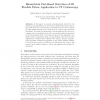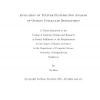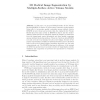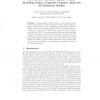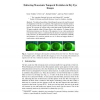124
click to vote
MICCAI
2006
Springer
16 years 1 months ago
2006
Springer
Abstract. This study presents a novel automatic approach for the identification of anatomical brain structures in magnetic resonance images (MRI). The method combines a fast multis...
91
Voted
MICCAI
2006
Springer
16 years 1 months ago
2006
Springer
In this paper, we present a learning-based method for the detection and segmentation of 3D free-form tubular structures, such as the rectal tubes in CT colonoscopy. This method can...
75
Voted
MICCAI
2006
Springer
16 years 1 months ago
2006
Springer
106
click to vote
MICCAI
2009
Springer
16 years 1 months ago
2009
Springer
Abstract. We present a method for automatically segmenting skin lesions by initializing the random walker algorithm with seed points whose properties, such as colour and texture, h...
97
Voted
MICCAI
2009
Springer
16 years 1 months ago
2009
Springer
This paper shows that adding 3D depth information to RGB colour images improves segmentation of pigmented and non-pigmented skin lesion. A regionbased active contour segmentation ...
MICCAI
2009
Springer
16 years 1 months ago
2009
Springer
Segmentation of medical images is commonly formulated as a supervised learning problem, where manually labeled training data are summarized using a parametric atlas. Summarizing th...
144
Voted
MICCAI
2009
Springer
16 years 1 months ago
2009
Springer
In this paper, we propose Multiple-Surface Active Volume Models (MSAVM) to extract 3D objects from volumetric medical images. Being able to incorporate spatial constraints among mu...
93
Voted
MICCAI
2009
Springer
16 years 1 months ago
2009
Springer
Model-based image segmentation requires prior information about the appearance of a structure in the image. Instead of relying on Principal Component Analysis such as in Statistica...
83
Voted
MICCAI
2009
Springer
16 years 1 months ago
2009
Springer
Potential sanitary effects related to electromagnetic fields exposure raise public concerns, especially for fetuses during pregnancy. Human fetus exposure can only be assessed thro...
91
Voted
MICCAI
2009
Springer
16 years 1 months ago
2009
Springer
We address the problem of identifying dry areas in the tear film as part of a diagnostic tool for dry-eye syndrome. The requirement is to identify and measure the growth of the dry...

